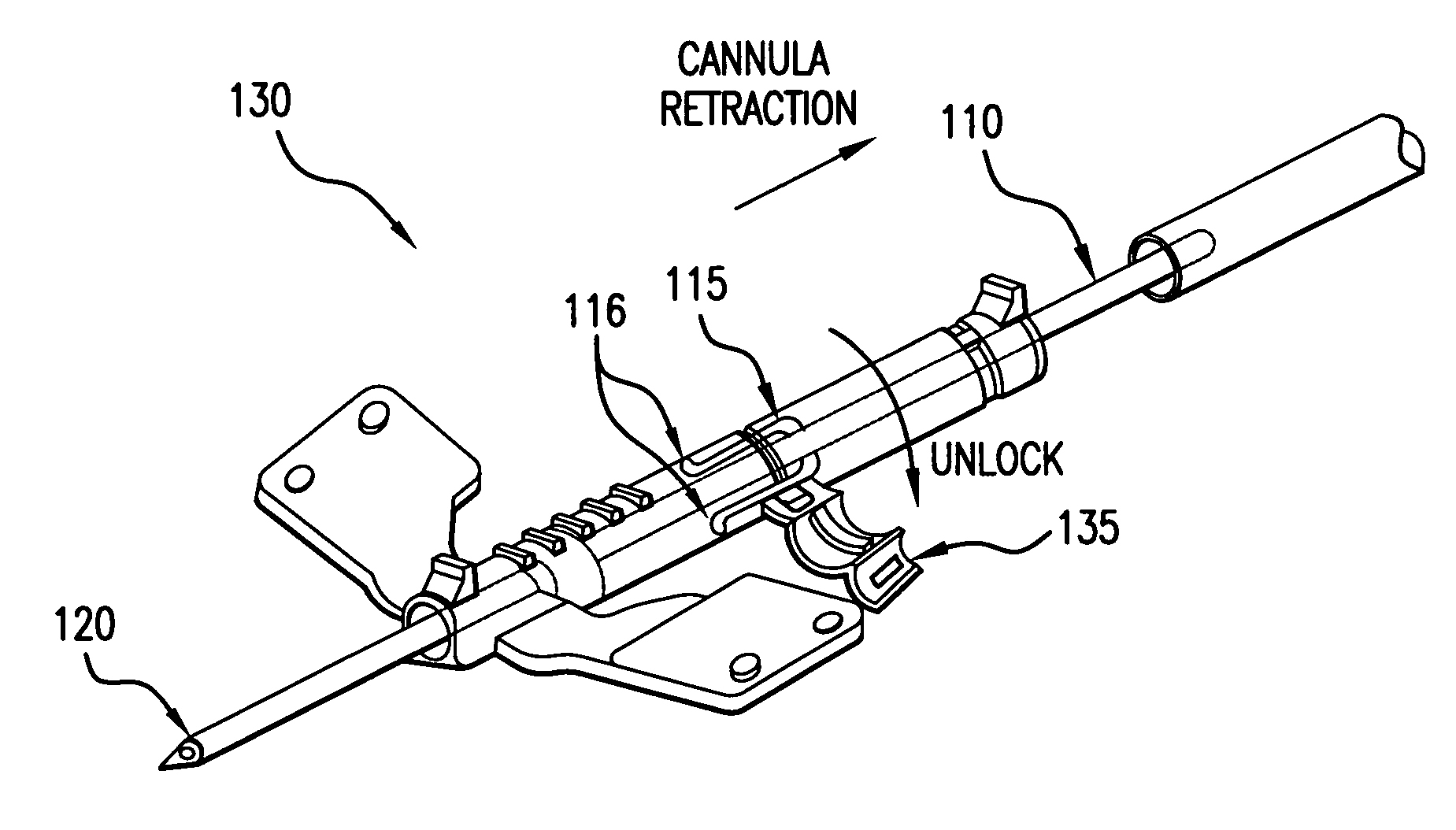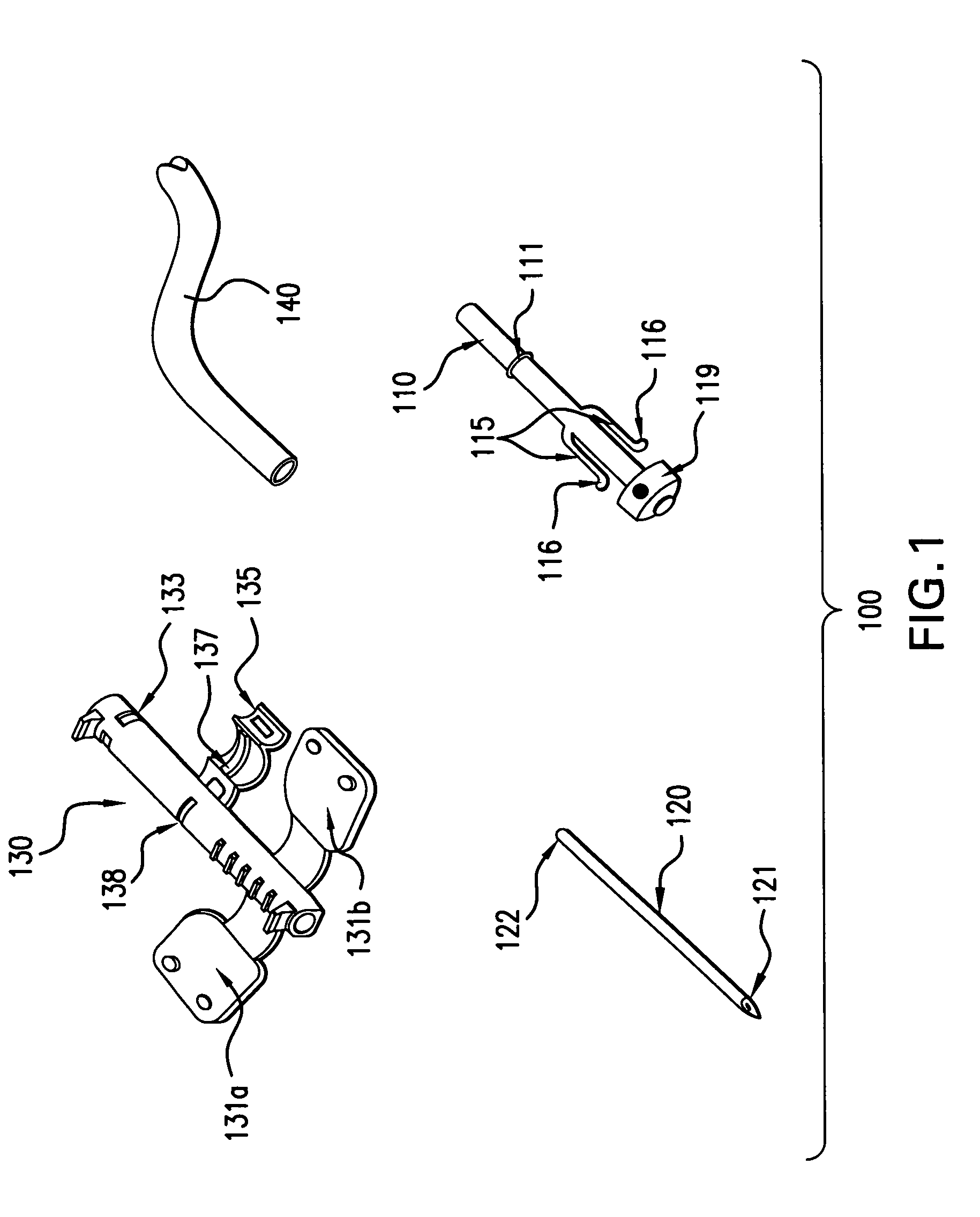Safety arteriovenous fistula needle
a safety needle and fistula technology, applied in the direction of guide needles, infusion needles, catheters, etc., can solve the problems of sharpened ends, increased risk to those who handle refuse containers, and increased risk to those who handle them
- Summary
- Abstract
- Description
- Claims
- Application Information
AI Technical Summary
Benefits of technology
Problems solved by technology
Method used
Image
Examples
Embodiment Construction
[0024]The Safety Arteriovenous Fistula (AVF) needle assembly 100 as shown in FIG. 1, is a retractable winged safety needle device having a needle holder 110 (referred to as a polycarbonate (PC) hub), a needle or cannula 120, and a winged sheath 130. Referring to FIGS. 1, 3a, and 3b the PC hub 110 is tubular, may be made of a polycarbonate material, and holds a proximal end of the needle or cannula 120 at the distal end. The needle or cannula 120 is hollow and has a beveled edge 121 at the distal end. The base 122 or proximal portion of the hollow needle 120 is fixed to and supported by a conical shaped head 119 of the PC hub 110. A polyvinyl chloride (PVC) tube 140 for use in fluid administration is slid over the proximal end of the PC hub 110, providing a fluid tight seal.
[0025]The PC hub 110 has the conical shaped head 119 at the distal end and a stopper 111 at the proximal end for tube 140 bonding. Furthermore, the PC hub 110 has a pair of flexible extension arms 115 located appr...
PUM
 Login to View More
Login to View More Abstract
Description
Claims
Application Information
 Login to View More
Login to View More - R&D
- Intellectual Property
- Life Sciences
- Materials
- Tech Scout
- Unparalleled Data Quality
- Higher Quality Content
- 60% Fewer Hallucinations
Browse by: Latest US Patents, China's latest patents, Technical Efficacy Thesaurus, Application Domain, Technology Topic, Popular Technical Reports.
© 2025 PatSnap. All rights reserved.Legal|Privacy policy|Modern Slavery Act Transparency Statement|Sitemap|About US| Contact US: help@patsnap.com



